
If that handful of mothballs tossed in with last season’s shoes have left a smell that makes your eyes sting, some quick odor control is in order. It's the strong odor that keeps insects, like moths, away -- but, it will also keep people away if you don’t air those puppies out. The smell can also cause skin irritation and breathing problems. Removing the offensive odor requires a bit of natural or man-made heat and some serious odor absorbers.
Step 1
Dampen a clean cloth with warm water and add a pea-sized amount of gentle laundry detergent. Wipe the external surfaces of the shoes to remove any mothball flakes or residue that may still be present. If the shoes are not water-safe, remove the flakes by brushing the shoes gently with a soft-bristled brush.
Step 2
Fill two old socks half full with activated charcoal. Tie a knot in the top of the socks to prevent the charcoal from spilling out. Activated charcoal is available in the laundry department of most supermarkets and general merchandise stores.
Step 3
Insert one sock into each shoe pushing them as far down into the toe as possible.
Step 4
Take the shoes outdoors to an area that receives good ventilation but that is not in direct sunlight. Place the shoes 6 to 12 inches apart to provide plenty of air flow in between them. If you can’t leave the shoes outdoors, place them inside a dryer and set the dryer to medium heat. Turn the dryer on for 15 to 20 minutes and wait until it shuts off. If the odor persists, place the shoes back in the dryer for another 15 to 20 minutes.
Step 5
Leave the shoes outdoors for 24 hours to allow the mothball smell to dissipate. Remove the socks from each shoe and smell the shoes to see if the smell remains.
Step 6
Create a mix of 40-percent water and 60-percent denatured alcohol and pour it into a spray bottle. Spray all surfaces of the shoes with the solution to get rid of any residual mothball odor. Let the shoes air-dry thoroughly. Test the alcohol on a small portion of the shoe first to ensure colorfastness.
Related Articles

How to Remove an Odor From Shoes With ...

How to Wash Mesh Athletic Shoes

How to Remove Scuffs From Soccer Cleats

How to Shrink Stretched Leather Shoes
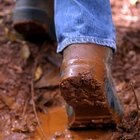
How to Clean Discolored Shoes

How to Remove Odor From Sneakers
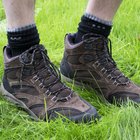
How to Clean Your Merrell Shoes
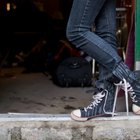
How to Make Converse Shoes Look Brand ...
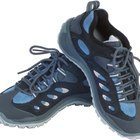
How to Air Out Shoes
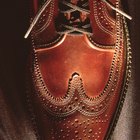
How to Revitalize Leather Shoes

How to Deodorize Crocs
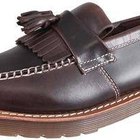
How to Clean Dr. Martens Shoes

How to Fix Nicks in Shoe Toes

How Can I Clean the Yellow Stain Off ...

How to Sanitize Dress Shoes

How to Get Sneakers to Stop Smelling

How to Fix Scuffed High Heels

How to Repair Squeaky Crocs

How to Break in Man-Made-Leather Shoes

How to Clean Retro 11 Jordans
References
Warnings
- Don’t try to cover up the mothball odor with a fragrance spray.
- Don’t use enzyme cleaners to remove mothball odors.
Writer Bio
Kimberly Johnson is a freelance writer whose articles have appeared in various online publications including eHow, Suite101 and Examiner. She has a degree in journalism from the University of Georgia and began writing professionally in 2001.
Photo Credits
Jupiterimages/Goodshoot/Getty Images